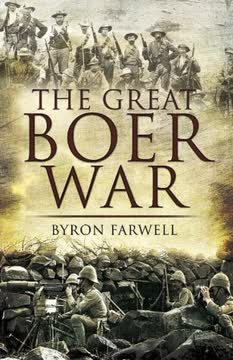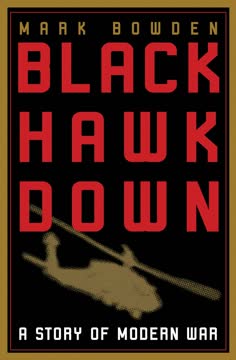Key Takeaways
1. The Boers: A People Forged in Independence and Conflict
"Conan Doyle called them 'the most rugged, virile, unconquerable race ever seen upon earth.'"
A unique heritage. The Boers, or Afrikaners, emerged from a blend of Dutch, French Huguenot, and German settlers in South Africa, developing a fierce, almost inbred desire for independence. Their history was marked by constant friction with authority, first the Dutch East India Company, then the British, and continuous conflict with indigenous African tribes. This struggle for self-determination, epitomized by the Great Trek, instilled in them a deep-seated distrust of external governance and a profound reliance on their own capabilities and faith.
Early clashes. The Boers' expansion inland inevitably led to violent encounters with African peoples like the Zulus. The Battle of Blood River in 1838, where a small Boer commando decisively defeated a much larger Zulu force, became a foundational myth, reinforcing their belief in divine favor and their own martial prowess. This early success, achieved through superior marksmanship and defensive tactics, shaped their confidence in facing numerically superior enemies.
British annexation and resistance. British rule, particularly policies aimed at protecting native rights and abolishing slavery, deeply angered the Boers, culminating in the First Anglo-Boer War (1880-1881). Humiliating British defeats at Bronkhorstspruit, Laing's Nek, and especially Majuba Hill, where a small Boer force routed British regulars, cemented the Boers' conviction that they could defy the mighty British Empire. This period of conflict and perceived injustice further hardened their resolve and sense of distinct identity.
2. Early British Blunders and Boer Victories
"Majuba, although a small affair, was particularly mortifying for Britain; never before in its long history had British arms suffered such a humiliating defeat: a group of unsoldierly farm boys had completely routed a British force containing elements of the Royal Navy and regulars from some of the most famous regiments in the British army, and a force, moreover, that was six times larger than that of the Boers and in what ought to have been an impregnable position."
Underestimation and unpreparedness. The British, confident in their imperial might, severely underestimated the Boers' fighting capabilities and determination. Despite clear warnings, the British army in South Africa was ill-prepared, scattered in small garrisons, and led by generals often lacking recent combat experience or understanding of modern warfare. This overconfidence and lack of foresight allowed the Boers to seize the initiative from the war's outset.
Black Week disasters. The initial phase of the war, dubbed "Black Week" (December 10-17, 1899), saw a series of humiliating British defeats:
- Talana (Oct 20): A tactical British victory but strategic defeat, marked by friendly fire and high casualties.
- Elandslaagte (Oct 21): A British victory, but the cavalry's brutal use of lances against fleeing Boers ignited deep hatred.
- Stormberg (Dec 10): General Gatacre's night march ended in confusion, mass surrender, and abandonment of troops.
- Colenso (Dec 15): General Buller's disastrous frontal assault, marked by poor planning, reckless artillery deployment, and the abandonment of ten guns.
Impact on morale. These early defeats, particularly Majuba and Colenso, shattered the myth of British invincibility and deeply mortified the nation. They exposed critical flaws in British military leadership, tactics (reliance on frontal assaults and bayonet charges against modern rifles), and intelligence. Conversely, these victories greatly boosted Boer morale, reinforcing their belief in divine favor and their ability to withstand the Empire.
3. Roberts's Strategic Masterstroke and Cronjé's Fall
"Roberts had arrived at a bold decision. His physical courage was proven—he wore the Victoria Cross on his chest—but it had taken courage of a different order to leave the railway behind and to cast his army onto the veld. It took even more to abandon the convoy."
A new commander, a new strategy. Following Black Week, Field Marshal Lord Roberts, with Lord Kitchener as his chief of staff, was dispatched to South Africa. Roberts, a seasoned veteran of Indian campaigns, quickly grasped the need for a radical shift in strategy. Instead of direct frontal assaults, he planned a wide flanking maneuver, cutting his army off from the railway, a bold and risky move that defied conventional British military thinking.
The Great Flank March. In February 1900, Roberts launched his "Great Flank March" into the Orange Free State, aiming for Bloemfontein. This audacious move, involving thousands of men and animals, was designed to outmaneuver the Boers and relieve Kimberley. French's cavalry, despite exhausted horses, executed a daring dash through Boer lines, relieving Kimberley and surprising the enemy.
Cronjé's entrapment. The most significant outcome was the entrapment of General Piet Cronjé's main Boer force at Paardeberg. Cronjé, clinging to outdated laager tactics, found himself surrounded and subjected to a relentless artillery bombardment. Despite De Wet's desperate attempts to break him out, Cronjé, with his 4,000 men, was forced to surrender on February 27, 1900—the 19th anniversary of Majuba Hill, a symbolic and devastating blow to Boer morale.
4. The War's Brutal Turn: Kitchener's Scorched Earth
"Burning farms, depriving the commandos of food and supplies, was only half of Kitchener’s strategy; the other half was to catch the slippery burghers on the veld, and this he found an exasperating task."
The war transforms. After Roberts's departure, Kitchener took supreme command, facing a new phase of the war: guerrilla resistance. The Boers, under dynamic leaders like De Wet, Botha, and De la Rey, abandoned conventional warfare, becoming highly mobile, elusive forces. Kitchener, recognizing that traditional military methods were ineffective against this new threat, adopted increasingly ruthless counter-insurgency tactics.
Methods of barbarism. Kitchener's strategy aimed to deprive the guerrillas of their support base and resources:
- Farm Burning: Initially punitive, it evolved into a systematic, wholesale destruction of Boer farms, crops, and homes. An estimated 30,000 farms were burned, turning vast areas into wastelands.
- Livestock Slaughter: Millions of cattle and sheep were killed or driven off, eliminating food sources for both commandos and civilians.
- Blockhouse System: Thousands of blockhouses were built along railway lines and across the veld, creating fortified lines (3,700 miles long) to restrict Boer movement and divide the country into manageable "polders."
Controversy and condemnation. These "methods of barbarism," as Liberal leader Campbell-Bannerman famously called them, sparked outrage in Britain and internationally. While militarily effective in denying resources to the guerrillas, they caused immense suffering to the civilian population and left a bitter legacy of resentment among Afrikaners, hardening their resolve rather than breaking it.
5. The Tragic Toll: Concentration Camps and Civilian Suffering
"More Boer boys and girls under the age of sixteen died in British concentration camps than all the fighting men killed by bullets and shells on both sides in the course of the entire war."
Unintended consequences. As farms were destroyed, thousands of Boer women, children, and elderly men were left destitute on the veld. Kitchener, initially citing humanitarian concerns and the need to prevent them from aiding commandos, ordered their collection into "refugee camps," which quickly became known as concentration camps. These camps, poorly managed and overcrowded, became sites of immense tragedy.
High mortality rates. The camps suffered from appalling sanitary conditions, inadequate food, and rampant disease, particularly measles and typhoid. Mortality rates, especially among children, soared to horrific levels, sometimes reaching 344 per thousand per month. This staggering death toll, far exceeding combat casualties, remains the most tragic aspect of the war.
Emily Hobhouse's exposé. The horrific conditions were brought to public attention largely through the tireless efforts of Emily Hobhouse, a British humanitarian. Her damning reports, initially dismissed by officials like Kitchener and Milner, eventually led to the appointment of a Ladies Committee. Their subsequent report confirmed many of Hobhouse's findings, forcing the British government to implement significant improvements, though not before thousands had perished.
6. Guerrilla Warfare: A Test of Endurance and Ingenuity
"The British would not be cruel masters—at least not deliberately. Most Boers knew this. But the flame of independence burned within them as brightly as it had in their voortrekker forefathers. No people ever desired their independence more. No people in history, not faced with the alternative of death or cruel tyranny, ever fought so hard for so long with so little hope of ultimate success."
The "bitter-enders." Despite overwhelming British numerical superiority, the destruction of their farms, and the suffering in the concentration camps, thousands of Boers, known as "bitter-enders," refused to surrender. Led by figures like De Wet, De la Rey, and Smuts, these highly mobile commandos continued to harass British forces, disrupting supply lines, attacking isolated garrisons, and launching daring raids.
Adaptation and resilience. The Boers adapted brilliantly to guerrilla warfare:
- Mobility: They remained highly mobile, often outmaneuvering larger British columns.
- Resourcefulness: They lived off the land, made clothes from grain bags, and relied on captured British ammunition and rifles.
- Local Support: They benefited from the sympathy and aid of the Cape Afrikaner population, though a full-scale rebellion never materialized.
- Leadership: New, younger, and more adaptable leaders emerged, replacing the older, more conventional generals.
Smuts's Cape invasion. Jan Smuts's audacious 2,000-mile invasion of Cape Colony in 1901, though not achieving a general uprising, tied down massive British forces and demonstrated the Boers' enduring will to fight. His commando, facing extreme hardship, exemplified the resilience and ingenuity of the guerrillas.
7. The Bitter End: Peace Forged in Exhaustion, Not Defeat
"The document has been signed. Everything has fallen silent in this room where so much was said. They remain motionless for yet another moment. A shattering feeling of loss overwhelms our men. The members of the Government rise, as if bewildered, to leave the hall. Speak they cannot."
Negotiations begin. By early 1902, both sides were exhausted. Kitchener, recognizing the futility of a purely military solution, initiated direct talks with the Boer leaders. The Vereeniging conference, a unique historical event, brought together 60 Boer delegates from across the scattered commandos to decide their fate.
A difficult compromise. The Boers, though militarily defeated, were not entirely broken. They fiercely debated continuing the fight, but the grim realities of their situation—destroyed farms, suffering families, dwindling resources—ultimately swayed them. The final peace terms, signed on May 31, 1902, saw the Boers surrender their independence in exchange for:
- £3 million for reconstruction.
- A promise of eventual self-government.
- No special war taxes.
- Dutch language rights in schools.
- Crucially, no franchise for black Africans until after self-government, ensuring white supremacy.
A lasting legacy. The Treaty of Vereeniging marked the end of the war but the beginning of a complex peace. The Boers, though defeated, had fought with such tenacity that they earned the grudging respect of their adversaries and secured concessions that laid the groundwork for their future political dominance in South Africa. The war, particularly the concentration camps, left deep scars, shaping Afrikaner nationalism and contributing to the racial policies that would define South Africa for decades to come.
Last updated:
Review Summary
The Great Boer War receives largely positive reviews, with readers praising its comprehensive coverage, engaging writing style, and balanced perspective. Many appreciate the author's ability to bring the conflict to life through detailed accounts and personal narratives. Readers find it informative, especially for those unfamiliar with the Boer War. Some criticize the book's pro-British bias and its handling of sensitive topics like concentration camps. Overall, it's considered an excellent introduction to the subject, though a few find it overly detailed or dated in its terminology.
Similar Books
Download PDF
Download EPUB
.epub digital book format is ideal for reading ebooks on phones, tablets, and e-readers.








